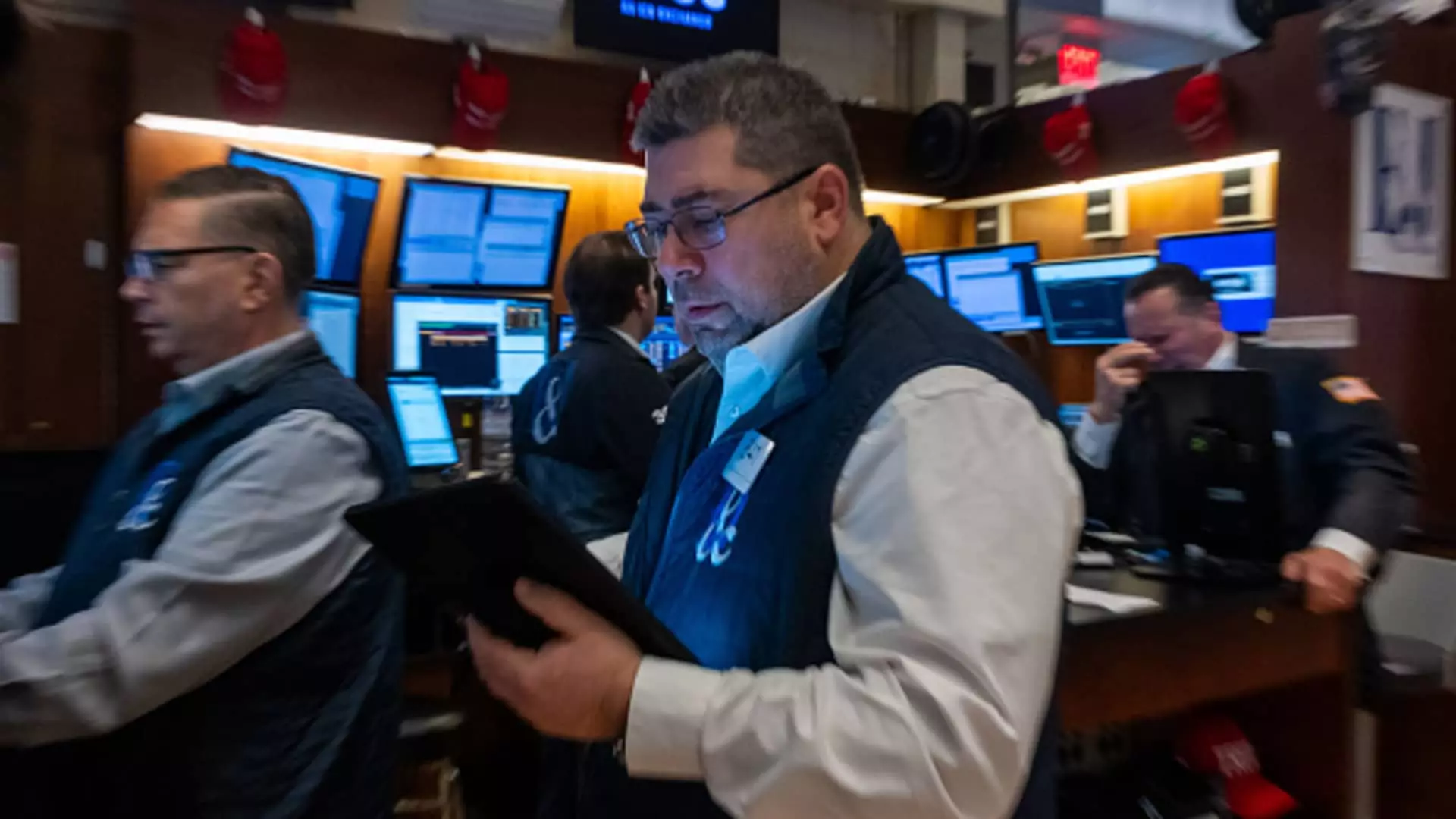In recent months, a noticeable trend has emerged in the equity markets: investors are increasingly adopting high-stakes strategies to leverage their positions. This phenomenon is particularly evident in the growing popularity of leveraged and inverse exchange-traded funds (ETFs). Such funds enable investors to effectively bet on the market’s short-term movements, either to magnify profits during bullish conditions or to profit from declines unexpectedly. This shift toward more speculative trading habits raises several questions about the sustainability of these strategies and the inherent risks they pose.
Defined as funds utilizing financial derivatives to amplify returns, leveraged ETFs offer dynamic exposure to underlying indexes. For example, in a scenario where an index appreciates by 1%, a 2x leveraged ETF could theoretically yield a 2% increase for investors, while a 3x leveraged fund could offer returns up to 3%. Conversely, inverse ETFs deliver reverse outcomes: a 2x inverse ETF would result in a -2% return should the underlying index climb 1%. As these investment vehicles continue to gain traction, their implications for the broader market cannot be understated.
The mechanics of leveraged ETFs are designed to achieve magnified daily returns through daily resets. This means that the returns on these products are recalibrated each day, making them ripe for daily trading strategies. Although this appeals to many investors eager for quick profits, it introduces an element of complexity that can be challenging to navigate. Holding onto leveraged ETFs for longer periods can lead to returns that differ significantly from expected outcomes due to the compounding of daily performance fluctuations.
Consider an investor who holds a 2x leveraged ETF. If the underlying index rises by 10% one day followed by a drop of 10% the next, the leveraged fund’s value behaves unpredictably over those days. For example, a $100 investment could fall to merely $96 instead of the anticipated $98, excluding transaction fees. Such outcomes emphasize that while these funds can generate high returns, the risk of loss is equally amplified, particularly in volatile markets.
The appetite for leveraged and inverse ETFs is reflective of broader trends in retail trading behavior. More investors are actively seeking to capitalize on short-term market movements, particularly amid heightened market volatility and uncertainty. With apps enabling seamless access to trading, newer generations of investors are embracing these opportunities, resulting in a paradigm shift in market engagement.
According to recent data, it is estimated that approximately 75% of the ownership of leveraged ETFs comprises retail investors. This demographic’s growing dominance in the trading space correlates with an increasing number of younger traders willing to explore leverage as a strategy for quick gains. Furthermore, the emergence of single-stock leveraged ETFs allows investors to target specific high-performance stocks, which has only added to the intrigue surrounding these products.
As ETFs gain prominence in the investment arena, leveraged and inverse offerings have found their place among the most actively traded products. For instance, the ProShares UltraPro QQQ has secured its position as one of the highest-volume ETFs in the market, highlighting the strong interest in products that cater to sophisticated trading strategies. Interestingly, on average, five of the top 20 traded ETFs in recent months are leveraged or inverse products, which exemplifies a stark contrast to traditional trading patterns.
The ETF market has witnessed a considerable expansion; in 2016, leveraged and inverse ETFs accounted for about 2% of total assets under management (AUM) among ETFs. Fast forward to today, their share has surged to nearly 8% of total AUM, amounting to approximately $81 billion. This growth can be attributed not just to a bull market environment but also to shifts in investor behavior towards riskier products that promise quicker returns.
While the allure of amplified returns remains paramount, investors must exercise caution regarding leveraged and inverse ETFs, especially when it comes to long-term strategies. The very design of these financial products can lead to unexpected consequences over time, necessitating a keen awareness of the associated risks. Market professionals caution that investors interested in these products should consider their investment horizon and overall risk tolerance.
The current trading landscape features a mix of opportunities and hazards. Ignoring the nuances of leveraged investments can lead to significant financial implications that may harm one’s portfolio rather than enhance it. As the industry evolves, keeping a close eye on market dynamics, along with educated decision-making, will be crucial for both retail and institutional investors engaging with these high-octane ETFs.
In essence, while the rise of leveraged and inverse ETFs provides an intriguing avenue for investment strategies, the critical elements of volatility and compounding effects must not be overlooked. As markets continue to fluctuate and evolve, informed participation will be vital in navigating the complex intersection of risk and reward inherent to these products.

